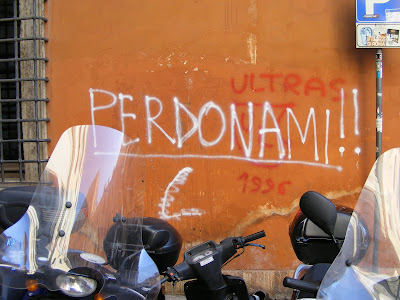1. Modern British Sculpture- Royal Academy of Arts (22nd January-7th April) This year at the Royal Academy I experienced a revelation; I had always dismissed sculpture because I didn't understand it and it didn't communicate with me. Then on the recommendation of my supervisor I went to Wild Thing and all of a sudden there was the sculpture of Eric Gill, Epstein and Gaudier-Brzeska speaking to me of the sensuality of stone, of its fleshly corporeality. I don't doubt that the Royal Academy will bring another challenging and astounding exhibition and offer another revelation.
'The exhibition will take a fresh approach, replacing the traditional survey with a provocative set of juxtapositions that will challenge the viewer to make new connections and break the mould of old conceptions.'

2. Shadow Catchers Symposium (4th Feb, V&A)- Yes I loved the exhibition so much I booked myself a space on the symposium like the giant art geek that I am. The artists will be speaking and so will Marina Warner (a slight and distant hero of mine). This feels like the future of photography.
3. Venice Biennale- This is a huge event and perhaps I will be there. Art, Cinema, Architecture, Dance, Music and Theatre, where else would you want to be over the summer?
4. Eric Gill: Public and Private Art, British Museum (10th February- August 7th)- I love Eric Gill and believe he deserves appreciation. My dissertation won't be finished yet either, so I can count this trip as research!
5. Barcelona- Since I am going in a couple of weeks...it looks like I will only catch the dregs of exhibitions from 2010 but this is an art city and will be a landmark of the year.
6. The Guggenheim New York- Because perhaps, just maybe, I might be here too.
7. Lucia Nogueira, Kettle's Yard (15th January-13th March)- It would be a crime to forget the treasures of exhibitions which will be occurring on my doorstep. More sculpture, Nogueira is involved with what seems to be a kind of reclamation, her work has been described as a process of 'taking things which are close to hand and imbuing them with malignancy and magic.' A lot of exciting things are happening for sculpture next year and Cambridge will be an important part of the exploration too.
'My way of thinking is very much from Brazil: my way of picking up objects comes from there too. It is something connected with childhood and also with the Brazilian psyche. Our way of thinking is not as linear as it is in Europe ... In art you obviously have a background in art history that is very rich. We don't have that in Brazil at all ... We just do everything in a very empirical way, even art.' Nogueira

8. Henry Gaudier-Brzeska Sculptures, Kettle's Yard Talks (10th February)- the influence of Wild Thing stretches far. Brzeska has his own attic of work in the Kettle's Yard house and I am looking forward to hearing the enigmatic curator Sebastiano Barassi talk.
9. Ian Hamilton Finlay's Little Sparta- This year I discovered Finlay's garden, his contained sculpted world, just as the season was ending. I did not have time to organise a trip to Edinburgh (it would have had to coincide with the Pope's visit) and missed the dying autumn moments of the garden. When the season opens again this year I will use it as an excuse to make a trip up to the beautiful city of Edinburgh and engineer a visit to my friends in St.Andrews. The thought of the garden makes me a little feverish with excitement.
10. Future Beauty- 30 Years of Japanese Fashion, Barbican- This is a postponed trip from 2010, my friend Ralph and I are going to make a trip, it will put Chinese Vogue in to an Eastern context and give us the perfect opportunity to reminisce.















































